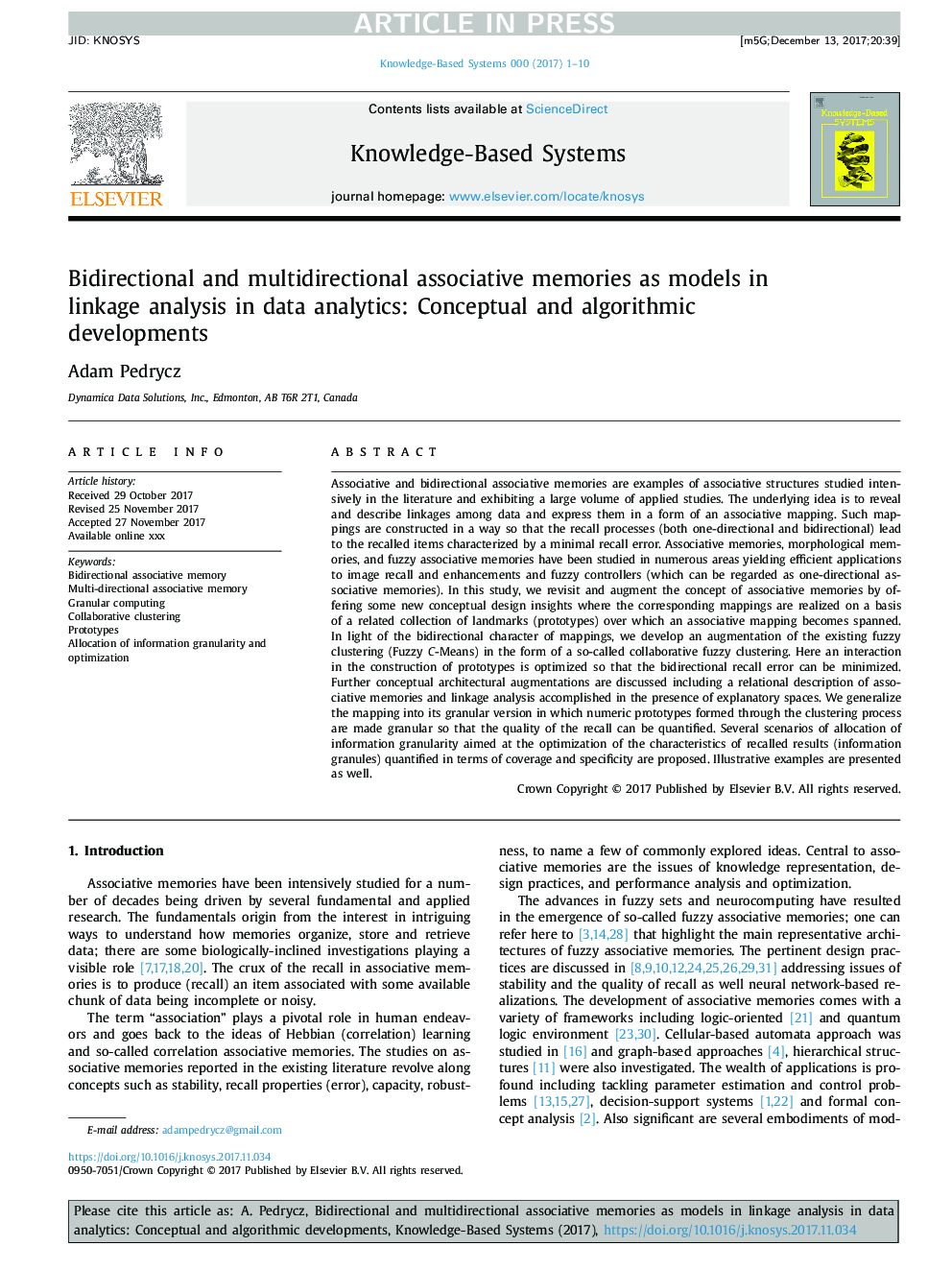| کد مقاله | کد نشریه | سال انتشار | مقاله انگلیسی | نسخه تمام متن |
|---|---|---|---|---|
| 6861875 | 1439259 | 2018 | 10 صفحه PDF | دانلود رایگان |
عنوان انگلیسی مقاله ISI
Bidirectional and multidirectional associative memories as models in linkage analysis in data analytics: Conceptual and algorithmic developments
ترجمه فارسی عنوان
خاطرات وابسته دو جانبه و چند جهته به عنوان مدل در تحلیل ارتباط در تجزیه و تحلیل داده ها: تحولات مفهومی و الگوریتمیک
دانلود مقاله + سفارش ترجمه
دانلود مقاله ISI انگلیسی
رایگان برای ایرانیان
کلمات کلیدی
حافظه انجمنی دو طرفه، حافظه انجمنی چند جهته، محاسبات گرانول، خوشه بندی همگانی، نمونه های اولیه، تخصیص جزئیات دانه و بهینه سازی،
موضوعات مرتبط
مهندسی و علوم پایه
مهندسی کامپیوتر
هوش مصنوعی
چکیده انگلیسی
Associative and bidirectional associative memories are examples of associative structures studied intensively in the literature and exhibiting a large volume of applied studies. The underlying idea is to reveal and describe linkages among data and express them in a form of an associative mapping. Such mappings are constructed in a way so that the recall processes (both one-directional and bidirectional) lead to the recalled items characterized by a minimal recall error. Associative memories, morphological memories, and fuzzy associative memories have been studied in numerous areas yielding efficient applications to image recall and enhancements and fuzzy controllers (which can be regarded as one-directional associative memories). In this study, we revisit and augment the concept of associative memories by offering some new conceptual design insights where the corresponding mappings are realized on a basis of a related collection of landmarks (prototypes) over which an associative mapping becomes spanned. In light of the bidirectional character of mappings, we develop an augmentation of the existing fuzzy clustering (Fuzzy C-Means) in the form of a so-called collaborative fuzzy clustering. Here an interaction in the construction of prototypes is optimized so that the bidirectional recall error can be minimized. Further conceptual architectural augmentations are discussed including a relational description of associative memories and linkage analysis accomplished in the presence of explanatory spaces. We generalize the mapping into its granular version in which numeric prototypes formed through the clustering process are made granular so that the quality of the recall can be quantified. Several scenarios of allocation of information granularity aimed at the optimization of the characteristics of recalled results (information granules) quantified in terms of coverage and specificity are proposed. Illustrative examples are presented as well.
ناشر
Database: Elsevier - ScienceDirect (ساینس دایرکت)
Journal: Knowledge-Based Systems - Volume 142, 15 February 2018, Pages 160-169
Journal: Knowledge-Based Systems - Volume 142, 15 February 2018, Pages 160-169
نویسندگان
Adam Pedrycz,
